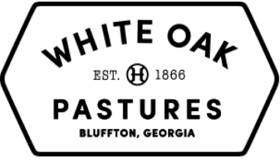
We are often asked why our products cost more than the industrial, commodity food in the grocery store. That is a very fair question, and I'm glad to respond.
There are several factors that must be considered in this comparison.
Commodity producers sell their raw products to Big Ag (an oligopoly of large agriculture companies), who later sell the product to Big Food (an oligopoly of large, value-added food companies). This includes animals, vegetables, grains, nuts, and fruit. Big Ag companies commingle multiple farmer's products to save money on freight and storage. Big Ag pays these farmers the "commodity price" that has been established for the product. To receive this commodity price, the farmer must be sure that their product (only) meets the "Minimum Requirements" that Big Ag has set for that commodity. No premium is paid to the farmer going beyond the minimum requirements. Excellence is not incentivized.
This system creates a "race to the bottom" in terms of quality. However, White Oak Pastures' success is dependent on making all of our products the very best that they can be. Our customers want the best, not just whatever has been able to meet the bare minimum requirements.
Industrial farming practices result in unintended consequences. The costs of these consequences are not covered by the perpetrators. They are externalized to society and are covered by all of us.
- There is a dead zone in the Gulf of Mexico that is as large as the state of Massachusetts. It was caused by fertilizer and pesticides washing off fields up and down the Mississippi River. The fertilizer and pesticide companies are not going to pay to clean it up. We all are.
- Think about the costs associated with fighting a 10,000-acre forest fire or cleaning up from a Category 5 hurricane. How much, additionally, does it cost for the increased insurance premiums to help cover the losses? The costs are not paid by climate change perpetrators. We all cover these costs.
- What portion of society will cover the costs when Miami, New Orleans, and our other coastal cities are underwater?
- Feeding subtherapeutic levels of antibiotics to livestock in confinement facilities causes animals to gain weight faster, making confinement feeding more profitable. This also causes pathogens in the livestock to become resistant to these vital antibiotics. The CAFO operators are not going to pay to fix the illnesses that this may cause.
- How much do cancer and other food-related illnesses cost society as a whole? Perpetrators don't pay these costs. We all do.
What happens to our food cost after all the farmers are squeezed out of business and the technocrats feed us? How much is food going to cost when the topsoil is gone and vegetables are only grown hydroponically by multinational publicly-traded companies? What about when meat and poultry are plant-based, also grown only by multinational publicly traded companies?
What is the societal cost of the impoverishment of rural America, rendered economically irrelevant by centralized food production?
And, what about the lack of resilience in our food supply? Do you remember when the grocery store shelves were empty during the pandemic panic? This is because the food production industry that feeds 99% of this country has traded all of its resilience for efficiency. It has been scaled up linearly until it is too big not to fail, given much adversity.
At White Oak Pastures, our production model is resilient. We never missed a beat.
Our production model internalizes these hidden costs that industrialized, centralized, and commoditized food production externalizes. Because of this, our food costs a little more. We remain wholly unapologetic for charging a little bit more for our food.
Will Harris

